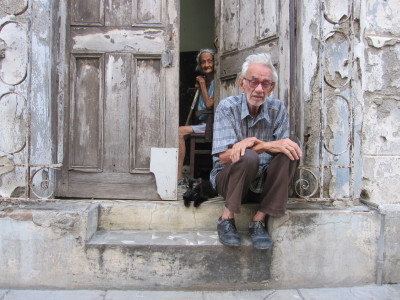In recent years in all the Sessions of the National Assembly of People’s Power the Minister of Health turns to expose in the Commission of Health and Sports aspects about the situation of national sanitation. In 2015 the Acting Minister Roberto Morales Ojeda said that “the country is well-prepared to confront the growing ageing of the population” and that “there exists a prioritizes program of the Ministry of Public Health (MINSAP) for the perfection and systemization of the actions with views addressing the progressive ageing of the Cuban population”. Nevertheless, the problems of the Cuban population are so great that 57 years of Castrosim has aggravated rather than solved them.

According to experts, the island faces the most dramatic ageing in Latin America and the phenomenon sharpens precisely when the government of president Raúl Castro tries to push ahead a program of reforms for reactivating the economy. In the period from 2011 to 2015 there was a descent in absolute terms of the population, which will continue in the coming years. In 2015, 19% of the population –more than two million people– were older than 60, declared the Minister of Public Health Roberto Morales. It is more than twice the regional average, 9%.
The vice president Marino Murillo, the economic czar of the island before legislators last month said that “the ageing of the population does not have a solution” and that “this is going to occur and it is not possible to transform in a short time. The society needs to prepare for the ageing”.
Cuba has the oldest population in Latin America, and it is clear that the tendency will increase: it is predicted that for 2030 elderlies older than 60 will be 3.8 million, more than a third of the population. The population is diminishing and ageing because of the low birth rate and the high rate of emigration, among other factors.
The problem has its roots in other achievements more important than the revolution led by Fidel Castro, like a universal health system, which increased the lifespan of 69 years in the 1960s to 78 years today. Moreover abortion is legal, and it is estimated that at least half of all pregnancies are terminated.
The population is decreasing and ageing in gigantic steps because women do no want to give birth; they do not feel the need to bring new life into the world because it is not possible to purchase clothing, child grooming or a simple mattress where the newborn sleeps. It is something that goes beyond the comprehension of a modern society.
The question of women who are in the prime of fertility converges into one point: Why become pregnant in this social and economical context, if life is here so expensive and the prices are higher and higher?
Another aspect to take into account for analyzing the decreasing of the population is the flow without return of Cubans outward. Official data of the Cuban government indicates that in the period between 2000-2009 the net migration amounted to 332,356 persons, that is the equivalent to three years of births in Cuba. In the period between 2010-2015 the amount of Cubans who “escaped” from the country increased exponentially: 43,000 Cubans emigrated illegally in 2015, 77% more in comparison to 2014, according to the data of the Census Bureau of the United States and the U.S. Immigration and Customs Enforcement (ICE).
In 2013 the government made changes in its political migration and this space has been seized for the people to emigrate definitively, in order to procure better conditions of life. Even if 2016 foresees the possibility of changes in the Cuban-American relation with the Obama administration, this does not stop Cubans, with many travellers to different parts of the world -primarily Ecuador-, to cross into various countries and reach the Mexican-United States border. This enlarges the expectation of ageing of the population well above the actual calculations on one hand and can unleash a migratory and humanitarian crisis on the other.
Similar problems of ageing and population decline are increasing in developed countries but the situation is completely distinct because these phenomena are due economic growth. As an underdeveloped country, in Cuba there exists no solution: the population has no option for the future and this oppressive economic crisis seems not have an end. Also in developed countries it is possible to compensate for this ingrowth young people from other countries. Here is not possible having in mind that life conditions are not even attractive for its citizens.
The only solution to all of Cuba’s problems is the reversal of the economic, political and social system, which created these disasters. In 2016 the VII Congress of the Communist Party of Cuba will be held. If at this meeting of the Communists the intention to update this dysfunctional model prevails, this will prevent people from standing and progressing. The measures will be insufficient and partial, and the problems will continue to accumulate, including the demographic ones.

Leave a comment